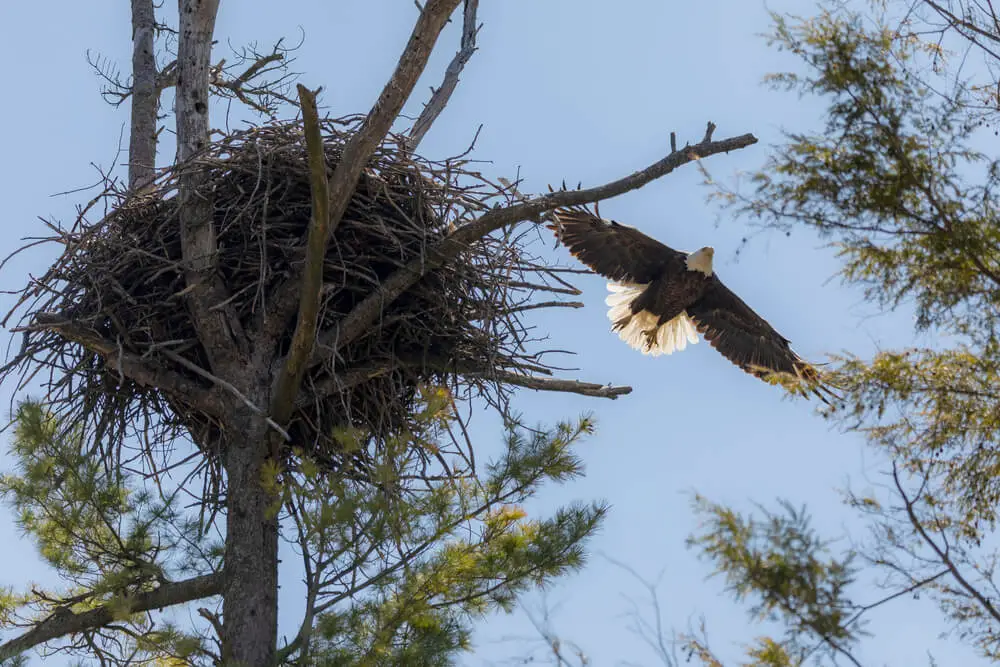There are few birds on the planet that are more iconic and memorable than the Bald Eagle, and there are many fascinating facts to learn about these majestic creatures. Have you ever wondered: How many eggs do Bald Eagles lay?
In most cases, Bald Eagles will lay two eggs at one time, although they can also lay one or three. There have been some incredibly rare recordings of four or five-egg clutches, but they are very much outside the norm.
Bald Eagles usually lay just one clutch of eggs per year, during their nesting season, and around 40 in their lifetime.
Read ahead in this article to discover everything you need to know about the egg-laying and nesting behavior of America’s most famous bird of prey.
1. How Many Eggs Do Bald Eagles Lay Each Nesting Season?
The vast majority of Bald Eagle clutches consist of exactly two eggs. Clutches of three or one egg are less common, and those containing four or five eggs are not completely unheard of, but they are very rare.
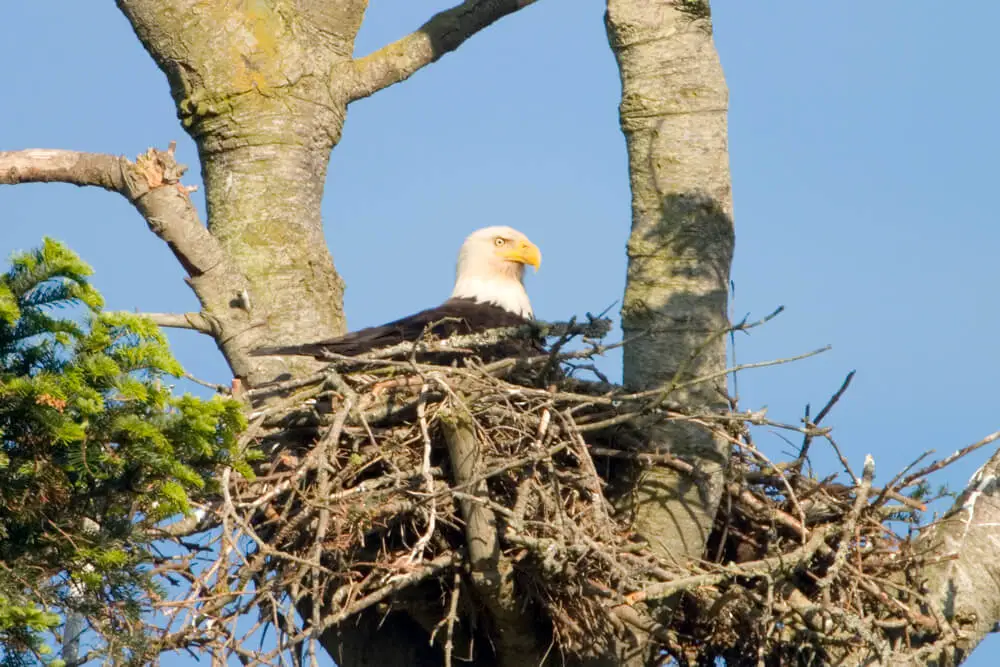
Some birds will fill a nest with many eggs every time that they are nesting, whereas others focus on just a small number of individuals. This group of eggs is known as a clutch. Bald Eagles tend to have a pretty small clutch that is surprisingly consistent in size every year.
Bald Eagles can usually live for 20 to 30 years, so a female may end up laying around 40 eggs in her lifetime.
2. Why Do Bald Eagles Lay Two Eggs at A Time?
There are many different reasons why different birds lay different numbers of eggs during the nesting season, but it always comes down to one simple thing: survival.
More eggs can, in some cases, mean that more chicks will grow to adulthood. On the other hand, having fewer chicks can mean that there is more space and resources available to care for them, so they are more likely to survive.
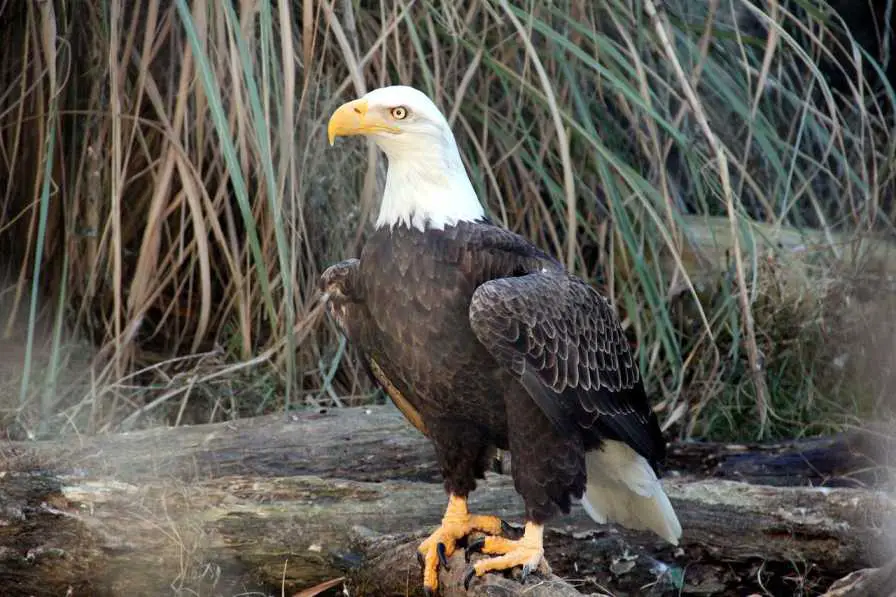
Bald Eagles are relatively large, predatory birds, so their chicks need quite a lot of space and food while they are developing. For these birds: two is the magic number. Parents would find it very difficult to feed and house more than two individuals in a single nest, but having more than one chick increases the likelihood that at least one will survive.
For other bird species, many factors can affect how many eggs an individual might lay during the nesting season, including:
- The Female’s Age: Older females often lay fewer eggs, perhaps because of the level of care that they can provide and the amount of food that they can gather.
- The Female’s Health: Similar to age, the health of a female bird can influence how many eggs she might lay.
- Temperature and Season: When the weather is colder, clutches tend to be smaller.
- Feed Resources: If there is more food around, birds may lay more eggs, and they may have smaller clutches when food is scarce.
- Population: The more birds that are in the area, the fewer eggs they are likely to lay.
3. How Long Does It Take for A Bald Eagle to Lay an Egg?

The actual process of laying an egg might seem like a quick one, but it doesn’t always happen overnight.
In fact, it usually takes a Bald Eagle female about two days to lay a single egg, so she often won’t complete her clutch for 5 to 6 days.
4. When Do Bald Eagles Lay Their Eggs?
When a Bald Eagle nest is full, then there are likely to be about two eggs (or two chicks) in it. This will hopefully happen every single nesting season, which occurs just once a year.
The time of their nesting season will depend on where in the world these birds live. They want to lay their eggs when conditions are just right, which is usually when the temperatures are relatively warm and there is a lot of food available.
There is not an exact week or month that triggers a Bald Eagle to start laying eggs – it varies from year to year and between individuals.
5. Which Bald Eagle Parent Looks After the Eggs?
Bald Eagle females will start incubating their eggs as soon as they are laid, and she will continue to keep them warm for the majority of the time until they hatch. While she is sitting on her clutch for most of the day and night, the male will hunt and bring her food.
Most days, though, the male will take over incubation and give the female a chance to take a break and forage for herself.
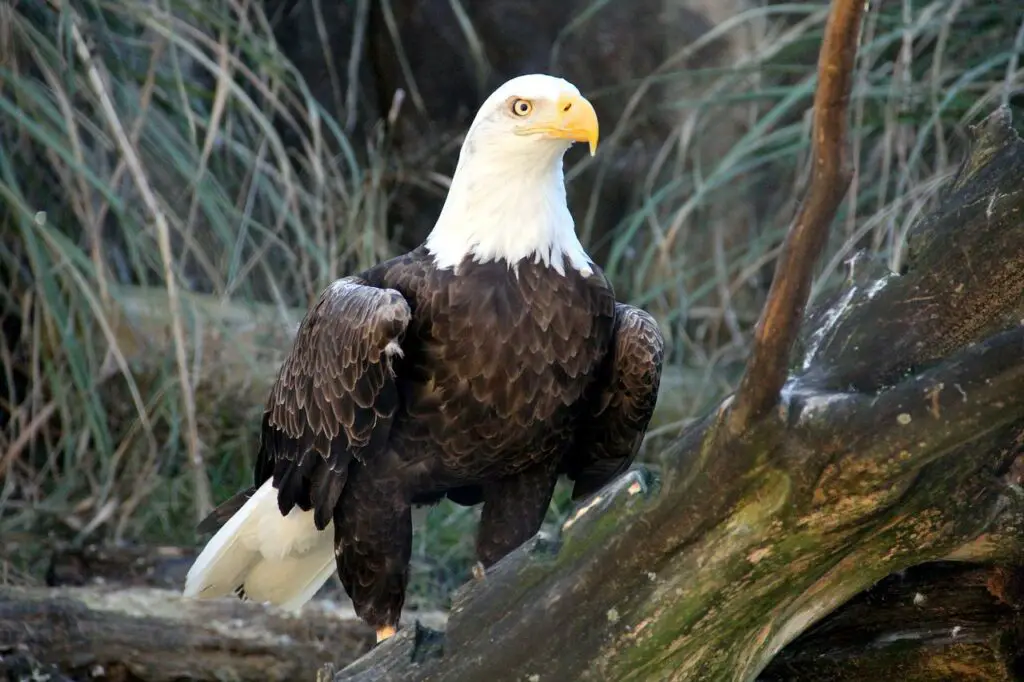
Bald Eagles are very gentle and attentive when it comes to caring for their eggs, and they have even been seen covering them with branches and leaves if both parents have to leave at the same time.
6. When Do Bald Eagle Chicks Hatch?
It usually takes Bald Eagle chicks (known as “eaglets”) about 35 days before they will hatch.
A few days before they are ready to come out of their egg, the chicks will develop a little “egg tooth” at the top of their bill. They use this to poke a hole in the membrane inside so that they can take their first breath. They will then break themselves free on their own, without the assistance of their parents.
Depending on when they were laid, the eaglets in a clutch will usually hatch about one or two days apart from each other.
7. How Long Do Baby Bald Eagles Stay in The Nest?
Once they are free from their eggs, eaglets will stay in the nest for around 10 to 12 weeks. After about 9 weeks, they are usually fully grown and almost ready to set out on their own.
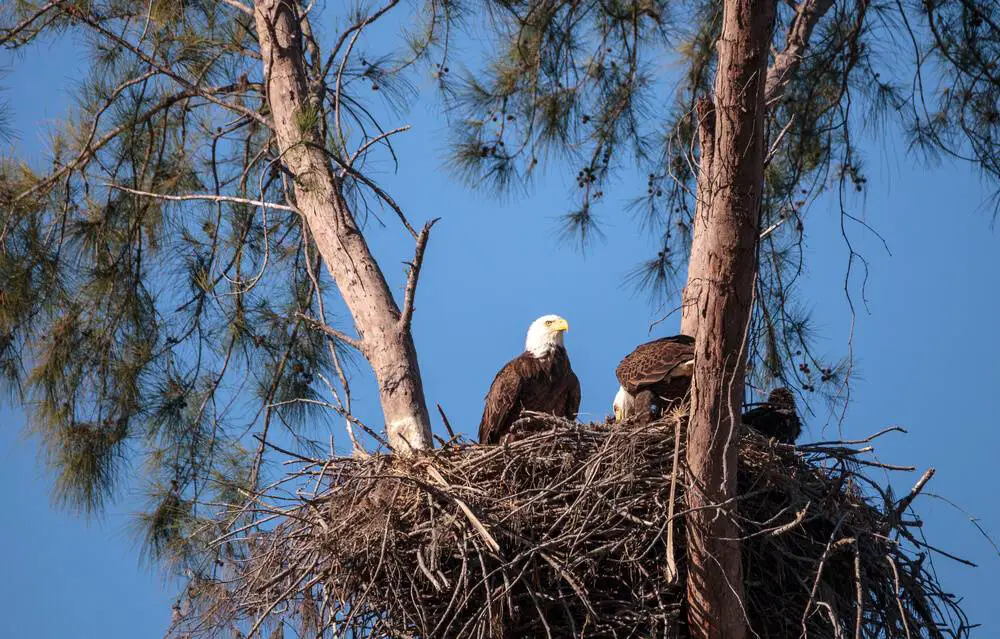
During their time in the nest, they will need to eat a lot of food. They can receive up to 8 meals per day, which are brought to them by one or other of their parents. For the first couple of weeks, the female stays at the nest, and the male hunts for food, but after this time they will share the responsibility.
Bald Eagle chicks don’t always get along with their siblings. The older eaglet will often be aggressive and dominant over a younger chick, and they can even try to harm or kill them.
Surprisingly, the parents rarely intervene.
This tends to happen when there is not enough food for all of the chicks in the nest, so a fight between the eaglets is a harsh example of “survival of the fittest”. The parents know that it is unlikely both will survive, so they focus their efforts on the strongest chick.
Read More: How Long Do Bald Eagles Stay With Their Parents?
8. Are Bald Eagles Endangered?
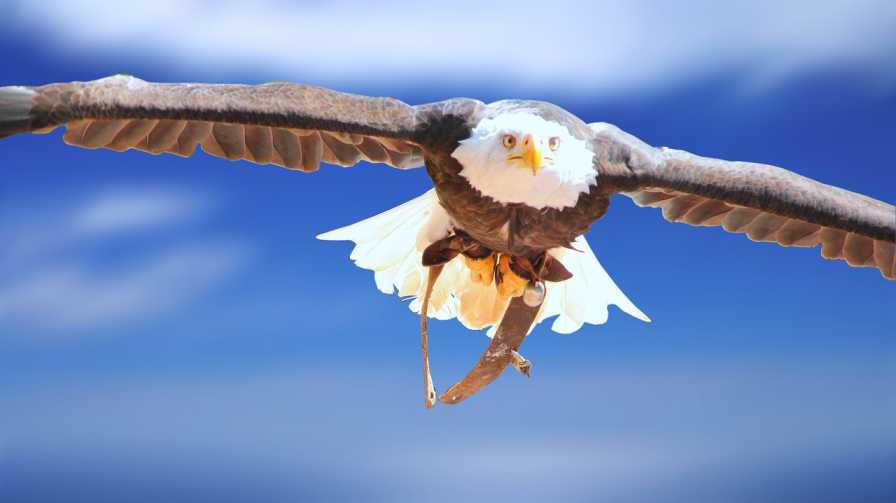
In the mid-1900s, pesticide use (DDT), hunting, and habitat loss severely reduced the number of Bald Eagles in the wild. In 1963, only 487 nesting pairs were recognized by the Fish and Wildlife Service in the United States. Now, though, they are back in much greater numbers.
The small number of eggs that Bald Eagles will hatch in a single year means that they can suffer greatly from changes to their environment. Even one lost clutch is devastating for their overall numbers.
Fortunately, DDT was banned in the 1970s, and the Bald Eagle was one of the first species that became fully protected under the Endangered Species Act. By 2007, they were officially removed from the list of endangered species and are now in the category of “Least Concern”, with their numbers still increasing.
Final Thoughts
So, how many eggs do Bald Eagles lay? Well, they almost always lay two eggs at a time, though they may also lay one of three in a single clutch. These birds will generally lay one clutch per nesting season, and around 40 different eggs in their lifetime.
There was a time when Bald Eagles were almost extinct in the United States, and their small clutch numbers can make it difficult for the population to bounce back. Despite this, these powerful birds are actually one of the great conservation success stories, which just adds to their glory.
I think, you’ll also enjoy reading:– Why Are Bald Eagles Called Bald?

